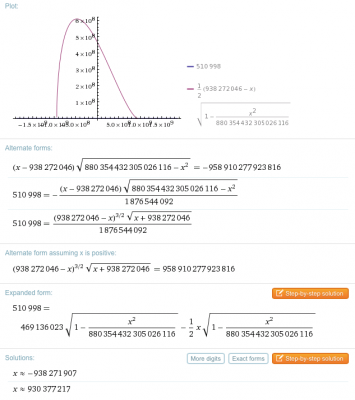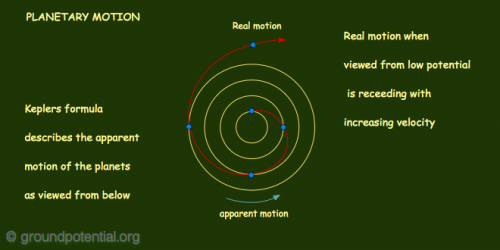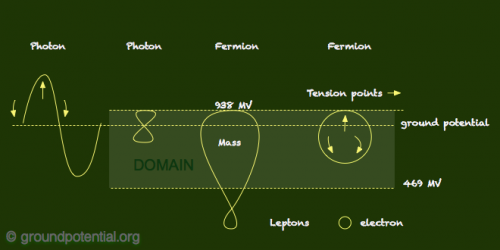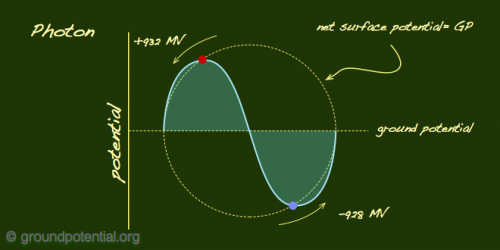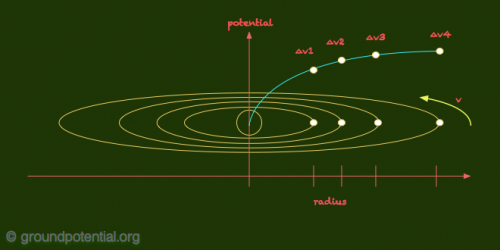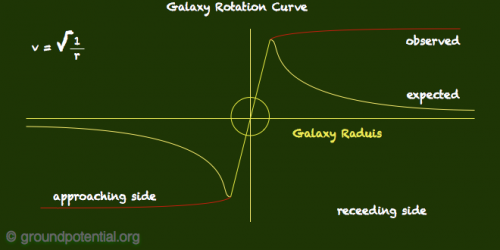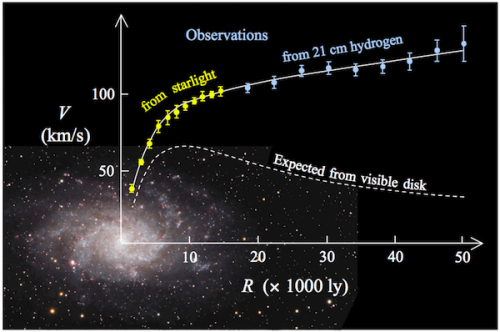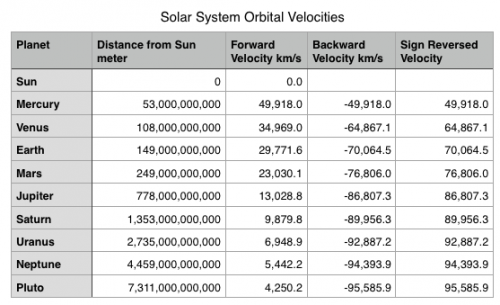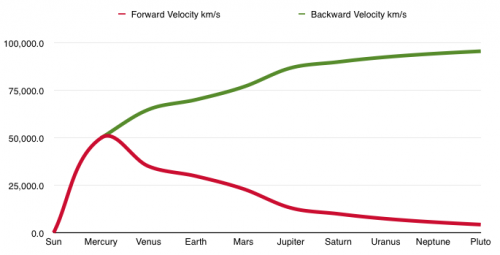-
Posts
145 -
Joined
-
Last visited
Content Type
Profiles
Forums
Events
Everything posted by beejewel
-
I feel we are reaching the limits of what my current theory and I can do in this area, so I request an adjournment to think, learn and extend it a little further. A few questions remain unanswered for now, but don't worry I'll be back. Steven
-
Yes, you get two solutions for x where the graph crosses the line one solution is the exact negative value of the proton, which I assume is the invariant electron mass in the antimatter domain, and the other is 930,377,217 Volts which I understand to be ground potential. I have been asked by other members how I derived this equation, and all I can say is that it was an intuitive educated guess, I knew what I was looking for, I had already worked out the hypothesis of how the proton and electron should to be related, so I tried a whole bunch of different formulas before hitting on this one and not only did it look right, it worked. Inspiration, perspiration and some derivation Steven PS: I am not ignoring Mordred's request above, just need to work on it a bit before I reply.
-
Sorry, you should be seing this, maybe you need to give Wolfram Alpha a bit more time.. There are two solutions for x, one is your ground potential and the other solution is the antimatter solution for the electron. The argument for this solution is that the mass per nucleon i.e. surface potential of Ni-62 is 930.417 MV, which is the element with the highest binding energy, and I claim this is because it is already at ground potential, so it can't decay any further, at least not for the moment. http://en.wikipedia.org/wiki/Nickel-62 Steven
-
oops, apologies, here it is to the nearest volt + or - about 20 volts. http://www.wolframalpha.com/input/?i=510998%3D%28%28938272046-x%29%2F2%29*√%281-%28x%5E2%2F938272046%5E2%29%29 The margin of error translates to a height of around 7-10 meters, as electrical potential increases by around 3 volts per meter height above ground. Steven
-
Not sure how I can explain it any clearer, the four velocity is the body-potential divided by the proton-potential multiplied by speed of light, while the relative velocity is simply the difference in potential between two bodies divided by c multiplied by the speed of light. From this function alone we can only determine the sign of the velocity not the direction of the vector. The sign indicates weather an object is approaching from the past or receeding into the past. Technically the observer is always the one at rest, at least this makes the transformations simpler, weather sitting at the station or sitting on the train, you are at rest, the rest, let the rest of the world do the moving. It's not really a contradiction, think of the world as a great big funnel leading to the black hole in the cetre of our galaxy, we are all going in there eventually, but the bodies enjoying higher potential i.e higher up the funnel, are moving downwards at a slower rate than you, meaning space between you and the bodies of higher potential is stretching, so they are receeding from you. Another way to put it is you will be going down the gurgler before them Sorry, I can't visualize your proposed cylindrical system.. 2500 km/s is the relative velocity between ground potential and a proton, so protons don't (can't) stand still, they have to move all the time (electrons too for the same reason), this constant movement is what I understand as the coloumb force. The effect is very similar to a gas under pressure, in a pressurised gas the molecules also give the appearance of repelling each other, but in reality is is just thermal velocity of the particles that manifests itself as repulsion. The absolute velocity is 99% of c and this motion is fortunately perpendiculat to time, so instead of heading straight down the drain, we enjoy spiralling around for a few billion years more (I hope). phi and Phi are pro numerals, member Sensei below has kindly defined the value of Phi to 6 decimal places for you... Thanks for defining the value of Phi. here is ground potential defined to three decimal places. http://www.wolframalpha.com/input/?i=0.511%3D%28%28938.272-x%29%2F2%29*√%281-%28x%5E2%2F938.272%5E2%29%29 Not sure why I have to justify the proton mass experiment in this thread, it is well known. hey, I like this guy Swanson, you are my favorite antagonist, you give me sleepless nights, but ultimately help me improve the theory Steven
-
Good question, GPT defines the four-velocity or absolute velocity of a body as a function of it's potential, so technically the proton is the only particle who's four-velocity is excactly 'c', here at ground potential our four-velocity is c(930/938) or 99.14 % the speed of light. The difference works out to be around 2500 km/s, so I guess we can call this for speed. Ultimately you, me and the proton are all heading to the same place, the black hole in the centre of the galaxy, but the proton being a light body with a high surface potential must take a longer path down, hence relative speed. The transformation of coordinates are fascinatingly perfect, because as we change our potential, everything in our world changes accordingly. All the electrons in your world instantly change mass, objects that were travelling in straight lines curve and everything just works without a glitch, and things seem great, that's until we start looking at the really tiny things, on a quantum scale, and realize that looking at our experiment changes the outcome. The normal Lorenz transformation should correctly transform the coordinates when using this form of gamma [latex] \gamma = \frac{1}{\sqrt{1- \frac{\phi^2}{\Phi^2}}}[/latex] Steven
-
GPT differs from current and past understanding of the world, in that it sets an upper and lower limit to the observers world domain, and defines the observers GP within that domain, further we understand from GPT that this world domain is quite asymmetric. due to this asymmetry of the energy, speed can not strictly scalar, as the body in motion must either have a lower or higher energy potential than the observer. Because of the asymmetry in the energy field around a massive body the sum of velocities for forward moving bodies differs from the sum of velocities for backwards moving bodies. Three forward moving bodies velocities at r1, r2, r3 sum as 3+2+1 = 6, while the same bodies concidered to be moving backwards sum as (-3) + (-5) + (-6) = -13 As mentioned above the world according to GPT is not symmetric, which is also consistent with our understanding that time only frows in one direction. We are not dealing with a cartesian plane, the space-time around a massive body is non euclidean. Steven PS: adding this little graphic at the end, which makes it more obvious how we see the spiral arms of galaxies in terms of real velocity rather than apparent velocity.
-
Speed is a scalar, but velocity is a vector. GPT says [latex] \Delta v = c(\frac{\Delta \phi}{\Phi})[/latex] In this case [latex] \Delta \phi [/latex] means (Ground-Potential) - (Surface Potential of Other Body), so in the case where the SPOB is higher than GP, the velocity vector is negative i.e. receeding. In the case where SPOB is lower than GP the velocity vector is positive and the body will be approaching. This is just a simple transformation, you sit on the platform and see me approaching on the train, you determine my velocity to be c*[(GP-TP)/PP] ie negative, while I determine c*[(TP-GP)/PP] to be positive. In the case of orbital motion we have to talk about speed, but this doesn't change the fact that Keplers speed comes out wrong. On the subject of potential increasing with height I defined this earlier by stating that an apple falling off a branch never fails to arrive in it's own future, this simple thought experiment is empitrical proof that the arrow of time points in the direction of lower potential, the past being up up and away, the present being the observers surface potential and the future being inwards. This leads to my understanding that the passage of time is the result of a gradual decline in the observers surface potential, which comes about because we are standing on a decaying planet Earth. The decay of the naturally occurring radioactive isotopes are responsible for the slow but gradual decay. Assuming 13.8 billion years since, well let's call it the beginning, we have fallen about 8 million volts in total, thats a tiny 0.00057 Volts per annum or 0.5 mV. which works out to about 1 Volt since the Roman empire reigned and a massive 50 kV since Dinosaurs reigned. PS: at the time of the dinosaurs 100 million years ago I estimate the electron mass was 0.506 meV http://www.wolframalpha.com/input/?i=0.506%3D%28%28938.272-x%29%2F2%29*√%281-%28x%5E2%2F938.272%5E2%29%29 Steven
-
That thread splitting confuses me, but it's your forum and I shall get over it .. Happy to stick with the planetary motions, but would like emphasise my belief that understanding the large scale universe starts with understanding Hydrogen, where it came from and how it combines according to specific rules to form the elements, stars and planets. Hydrogen is IMHO the elementary building block of nature not quarks. I went back to my original table of planetary motions and added some columns. Relative potential to Sun if planets move forward Formula = (forward velocity) * (proton potential)/c Relative potential to Sun if planets move backward Formula = (backward velocity) * (proton potential)/c Absolute potential of Sun and planets (when backwards) Here I have used ground potential as the bench mark and added or subtracted the other bodies potential depending on weather it is closer or further to the sun than earth. My proposal that planets move backwards seems simple and consistent with relativity theory, as space curvature ought to decrease with increasing radius from the sun. The orbital motion of our planets may be confusing the mind, because there are too few planets for us to see a pattern in the arms of our planetary system. mercury appears to be spinning around in a forward direction with Mars slowly following, while the real motion is actually Mercury spinning backwards with Mars slowly overtaking it, and Earth running past in the outside lane. As mentioned above, when we look at the spiral arms of galaxies there probably aren't any easily visible stars that move as slow as Mercury, so what we see are a string of stars that move increasingly faster as the radius increases. there is also the relative velocity of the galaxy as a whole to concider. Summarising herewith Step by step I have shown how the mass of the electron is related to the mass of the proton by a function of gamma, I then show using basic algebra that four velocity is a function of a bodies surface potential, I then go on to show that relative velocity is a function of relative surface potential. I then propose that ground potential can be used to calculate the mass of galaxies by measuring the relative velocity between Earth and stars in the arms of the galaxies, and suggest that measured velocities broadly agree with ground potential, because star orbital velocity ought to increase as a function of distance from the galactic nucleus. This finding has brought Keplers law into question, because like galaxies, planets around the Sun ought to behave in the same way, and after concidering this problem, i realised that the planets do indeed move backwards i.e. receeding from the Sun. Admittedly 1st. of April was a bad day to share the news, but ho knows, maybe Kepler was the real joker Steven More on the relative movement of observed galaxies.. GPT determines local Earth ground potential to be 930,377,000 Volts give or take a few hundred volts, and when we observe a distant spiral galaxy we can assume that there is a dense nucleus in there which is most likely a black hole. We know from GPT that the surface potential of a black hole is half the protons surface potential and that's 469 MV, further we know that because the distant galaxy we are looking at is in the past and moving away from us, it must on average have a higher potential than our galaxy. Therefore when we look at the galaxy side on, there must be a point on the radius which lies exactly at ground potential, which means a point where the relative velocity is zero. In receeding Galaxies this point lies closer to the galactic center than Earth's distance to the galactic centre in the Milky Way, assuming a similar size galaxy. Stars with higher surface potential than GP are receeding from us, and stars with lower potential than GP are approaching us. Essentially all visible galaxies should have stars with surface potentials ranging from 469 million volts at the black hole to 938 million volts at the edges where only Hydrogen nuclei exist. Steven
-
Okay, I agree that the properties of every standard model particle needs to be justified in therms of GP Theory, but the proton the electron and the photon are comfortably dealt with in GP. In my theory the hydrogen atom is a wave, and as soon as ground potential falls below 938 MV (proton potential) the electron starts gaining its mass, but it's physical existance is outside the observers domain (469 MV to 938 MV) so it's structure can not be probed. think of it as lying inside a black hole, it's mass can influence us, but it's structure is on the other side of the horizon. In GP the proton is a half wave, so it will have three internal tension points, I speculate that these may be the quarks. I have more work to do in this area, so I don't want to commit at this stage to define all the particles. Certainly the heavy GeV particles are going to be a challenge, but Rome wasn't builty in a day. Steven
-
I trust the equation, and yes it can be tested, simply measure the relative mass of the electron to proton at varying potentials. An experiment like this is essentially the same as a gravitational redshif experiment, and it might even be possible to prove mathematically that it's the same thing, in which case the physical experiment is superfluous. The inwards energy in the form of waves is a function of your potential, I think it might even be possible to brove that the energy of all photons is equal to the energy of the mass, but that's another story. Like you say gravity waves should arrive in all sizes and the random effect it has on electrons give us the mean value for its mass. In order to determine a gravity wave from the noise we would have to make an attempt at identifying a particular event, such as a pair of binary neutron stars in close orbit, this might show as a regular pulse difference between two widely separated clocks. But I am not familiar with the methods and don't know what you can and can not do with clocs. In GP theory there is energy and waves, these waves can be symmetrical like a photon, or asymmetrical like a hydrogen atom, the trough and the crest of a wave can even be spatially separated as in an ionised hydrogen atom, but ultimately the basic building block is the hydrogen wave, from which all the other elements are constructed. Incidentally I have found a strong correlation between how nuclei are constructed and prime numbers. In the image above I show how I imagine a chargeless 4 MeV photon, basically a wave which oscillates either side of ground potenntial, the crest and the trough propagate according to the second law of GP, which means the crest and trough do not propagate at the same velocity and therefore gives rise to angular momentum. The net surface potential is zero which means Delta (phi) is 930 MV so the particle is therefore moving at the local speed of light. What we concider particles with mass, are the same thing. but they are non symmetric, which means they no longer have a zero suface potential and therefore do not propagate at the speed of light. Allthough a wave is always a wave, the peak and the trogh can be separated to larger distances as in ionised Hydrogen, thereby giving rise to charged particles. In GP theory you cant look at a galaxy as an independant system because you as the observer are a part of it. The orbital velocities of every star is a function of its potential and your potential (delta phi). So the closer it is to 469 mV the further it is away from your 930 MV on earth and the faster it moves. Steven
-
Obviously you can solve the equation both ways if you know velocity you can find surface potential, or if you know surface potential then you can find velocity, but how do you measure the surface potential of a moving planet? Regarding gravity waves, I had trouble finding how much energy they are likely to have, the gravity waves might be like photons, on the order of +- a few volts, or possibly 100's of volts. I tried asking a guy that's working on the LIGO project, but he gave me the answer in terms of LIGO sensitivity, which for pobvious reasons wasn't very helpful. some of the guys here might know how much mass is lost with every orbit when two neutron stars are doing an inspiral, then that energy dissipates at 1/r^2 until it reaches us. Steven
-
My guess is that the reason spiral arms in galaxies are prominent, is because the difference velocities from one star to the next is much smaller than say mercury and saturn. In our solar system mercury has done hundreds of laps before saturn has gone one round, so for this reason it's hard to visualise how our planets are actually move away from the observer, while in the spiral arms of a galaxy the whole arm either moves towards you or away from you, and we don't actually see the fast orbiting bodies like mercury. If our planets were tighter together like a string of beads I think we would see them twirling around the planet like spiral arms and indeed the last one in the strand would be travelling away from the origin as if the string of pearls was stretching. Steven What other particles of significance are there? GP describes all particle pairs as waves, simple peaks and troughs, that all it is, when the wave gets to a certain energy, the negative part of the wave passes through a singularity, we see this at an energy of 1022 KeV and above. Take for example the positron, its the matter half of the electron, and not the antimatter half as the current theory suggests. Unlike the proton-electron pair the positron-electron pair are not asymmetric, which is why they immediately annihilate. The neutron is simply a very asymmetric proton-electron wave and decays as we know within around 14 minutes by releasing a bit of energy to become a proton and an electron again. Given the velocity of a body, the second law gives you the surface potential, and a body in orbit must follow an equipotential path equal to its surface potential, else it would in effect be accellerating. So by measuring the potential at multiple points along the galactic disc, we can build a picture of the gradient, and once you know the gradient you can use Newtons law to derive the mass. I think the current theory that galaxies harbor a black hole in their center is correct, and from GP thgeory we know excactly what the surface potential of a black hole is, it is excactly [latex]\frac{\Phi}{2}[/latex] or 469 million volts. so when we plot the potential gradient we start the plot at the SR radius and with the origin at 469 MV. Steven
-
For some reason I can't explain, we or at least our conciosness resides in the positive domain, and the crossover to the negative domain goes through a singularity, so we are prevented from probing the internal structure of the electron, we can only know it's potential. We may speculate weather or not there is conciousness in the negative domain, but will never know for sure. The negative domain will look identical to the positive domain but will be charge reversed. I disagree, my model does not predict orbital velocities, you input a velocity and get ∆(phi) out, from which you can derive the mass inside the orbit. What I bring to the table is a model in which you the observer directly affect the world in which you live. When you get into a car and drive off at 90 miles an hour you are changing your potential and thereby changing (slightly) the world. Because my model is essentially relativistic, ie. derived from gamma, albeit gamma in a different form, the relativistic number crunchers will probably get the same result, however I have made a public bet of $1.00 with some scientist in England, that Kip Thorne's famous LIGO experiment will never detect gravity waves. The apparatus will not work because the arms of LIGO will not expand or contract as gravity waves pass through. Gravity waves only affect the observer and because the observer is in effect a single point, as the wave passes through all three axis are affected equally. Steven PS: I think gravity waves might be better detected with atomic clocks, because as the wave passes through the mass of the electron changes by a small amount according to the first law of GP. One would have to detect a change in the rate of several clocks over the period it takes for the wave to pass. I believe space is full of waves, so I doubt you would have to wait years.
-
Hmm, I recall we have been down this path before, and it wasn't very constructive, so please let me change the direction of this thread. The accepted model is fine, I am not here to argue that the current method is wrong or that it doesn't work. I also conceed that you guys are very knowledgeable in this field and I respect that. We could debate if planets are approaching or receeding but in the end it's just semantics and I can see both methods working. Ground Potential is a theory theory under development, we only have a couple of tools in the box so it's a question of what can be done with those tools, and can we find others. GP theory now has two laws, which I believe are solid. The first law says that the electron mass is related to the proton mass by the following equation; [latex] \phi_e \gamma = \frac{\Delta\phi}{2}[/latex] Where ø(e) is the electron surface potential and ∆ø is the "Proton surface potential" less "ground surface potential". For those who have not read the earlier threads this expands to the full equation as follows; [latex] \phi_e = \frac{\Phi_p-\phi_{g}}{2} \sqrt{1-\frac{\phi_g^2}{\Phi_p^2}}[/latex] I have found that the most convenient unit for potential is the Volt, and to convert mass directly to Volts we use eV/c^2 and drop the c's and drop the e's Based on the current value of the electron and the protion ground potential comes out to 930,377,000 Volts The second law of GP says. [latex] \gamma = \frac{1}{\sqrt{1-\frac{v^2}{c^2}}}= \frac{1}{\sqrt{1-\frac{\phi^2}{\Phi^2}}}[/latex] from which we can derive [latex] \frac{v}{c} \propto \frac{\phi}{\Phi}[/latex] this gives us the following solution for the four-velocity of any body [latex] v = c(\frac{\phi}{\Phi})[/latex] the equivalent three-velocity or real observed velocity of any body is a function of the difference in potential between you the observer and the body in motion. (in GP theory the observers potential affects the way the world looks) so we can measure the real velocity of any object using as suggested the doppler method, and apply the following equation to find the potential or vise versa. [latex] \Delta v = c(\frac{\Delta \phi}{\Phi})[/latex] This simple equation is what I have called the second law of GP, because it is works and because it is so simple. we see all along here that the proton potential Phi remains unchanged, this is because I have discovered that it is a physical constant in the same way as c in the speed of light. This last equation seems to work on any scale, and not only for massive bodies and particles, but I find that it also works for waves. using this equation I have discovered that wave peaks and troughs actually propagate at different speeds which gives rise to the angular momentum of waves. I have worked out, that even light must have angular momentum. Using the second law of GP, one can even derive a direct mechanism by which gravity works, no need for gravitons Higgs bosons or any other exotic matter. So now the question we ask above is how can this be used to study Galaxies? The first way that comes to mind is to use this method to calculate the mass distribution within a galaxy. We have existing ways to measure the velocities relative to us, of stars in the galactic discs and from this, using the second law of GP, we can calculate the exact surface potential of the star, and since a star simply moves along an equipotential path which is equal to it's own surface potential, we can by measuring the radius, deduce the amount of mass inside the orbital. I am not suggesting that this can't be done with other methods, instead I propose that this is another method which should also work. If it can be proven that the second law of GP holds for galaxies as well as quantum mechanics, as I hope and suspect, it would be a neat tool to have in the box. I expect the hardest part to accept is that protons and electrons are related, because we have been taught that particle pairs must have the same mass, but that assumption is wrong, because we are observing the particles asymmetrically, once you get over it, it's no longer a big problem. The other difficult thing to come to terms with in GP theory is how a change in ground-potential changes the world around you, this is a straight outcome of the first law, which says the mass of every electron in the Universe is a function of ground-potential (observers potential). Difficult as it might be, this law demystifies some of the effects we call spooky in quantum mechanics. If any one other than me can confirm that these two laws work, then it is the start of a new way of working, and no longer speculation. Steven
-
I better make it clear that my statement that the planets are moving backwards does not in any way change their orbits or where they will find themselves in the future, and after thinking about it even more, you dont have to change anything in your animation, it's perfect the way it is. imagining how the planets move backwards instead of forwards is purely a state of mind. Stare at the animation long enough and imagine the planets going backwards. No doubt there is some dark matter in there, like rocks asteroids and planets, but not to the extent theorists are suggesting recently. The galaxy rotation curves certainly look like the velocities of the backwards spiralling orbits I describe in the opening post, which by the way was not intended as an April fools joke . 1) My understanding is that keplerian laws are applied to galaxies as well, although I understand some modificationa re made to allow for the different mass distribution. 2) Not sure what you mean about faked curve, the curve was a direct plot from the numbers in the table above. 3) Looking at our own galaxy rotation is still on a much larger scale than the planets, and I have not studied it, but I suspect there will be some flattening of the curves at large distances. 4) speculation based on dark matter hypothesis 5) Universe is not expanding in my GP model, it is ground potential falling which causes the redshift, this is evidensed by matter gradually spiralling inwards towards the galactic black hole. I speculate that matter sucked into the black hole is torn apart into individual protons and electrons and ejected dimetrically along the time axis, recycled protons reappearing in the past at the edge of our galaxy to repeat the cycle. 6) Since I don't see the need fo dark matter at this stage, I have never attempted to explain this. Doing this in Ground potential theory is very simple, because relative velocity is simply a function of the difference in potential, the formula is just; [latex] \Delta v = c*(\frac{\Delta \phi}{\Phi}) [/latex] Where [latex] \Delta \phi = ("ground'potential") - ("orbiting'body'surface'potential") [/latex] and [latex] \Phi = ("proton'surface'potential") [/latex] I don't see why doppler shift method would work any differently with my model ? After 500 years of Kepler, I have no doubt that forward motion can be justified, and you have done that carefully above, instead I am suggesting that backwards motion can also be justified. While current theories are workable with forward motion, my ground potential theory just doesn't allow it, because the difference in surface potential between ground and planet demands velocity must increase with height, which it only does when planets move backwards. Some of you guys have linked me a few good papers, and I plan to do some more reading and thinking, so in the mean time, dismiss the idea as an April fools joke or concider it as an option. Steven PS: Thought Experiment You have an infinitely long roll of string fixed to the ground, you then launch a rocket into space carrying the end of the string, then as soon as you reach the first orbit a mark is made on the roll, the main engine is jettisoned in orbit and the second stage of the rocket proceeds to accellerate with the end of the string to the higher orbit. Does the string become shorter after the first stage has been reached?
-
Swanson, We could debate if gravity is indeed a force, but let's not go there right now, instead focus on your last contradiction above, where you admit a rocket must accellerate away from the sun in order to reach the mercury orbit, you then admit it must accellerate further to reach Venus orbit, providing the rocket does not turn around and come back home, my understanding is that acelleration + accelleration will result in velocity + velocity. Don't worry, changing the way we think about orbitals won't make the planets fall down, but it could be more fatal for dark matter. PS: i will get around to reply to the other members over the next couple of days, just a little busy right now. Steven
-
Sensei, I thought about your video animation on the way to work this morning, and the mod is simpler than we thought, just time reverse the program, i.e. just run the movie backwards! If you could upload a backwards version like that it would be Senseisional Steven
-
Thanks Ground Potential is a simpler and better theory, and it makes predictions so I guess it has some value then.
-
Still not right, my suggestion is still to keep the sun at 0.00 but to reverse mercury's direction and allow the other planets to maintain their relative positions. Once again as I explained to Swanson, if you wanted to get a rocket into orbit from the sun, it starts off accellerating away from the sun until it reaches its first orbit (mercury) then you accellerate it further to even higher velocity in order to reach the next orbit (mars) then you accellerate it even more to reach (earth) orbit and so on.... each time speeding up. Because no one alive ever saw the planets being blasted into orbit, no one realized that they are moving backwards (away from the observer) , we naively assume they are moving forwards, but this doesn't make any sense, it leads to the contradiction that a rocket has to speed up in order to slow down??? Keplers law is therefore a solution to a naive view of the orbits. Steven
-
I am impressed by the way you can manipulate that video program, very clever, but your rendition showed the pre Copernican revolution version which is not what I meant. My suggestion (mayby not so clear) was to rotate the sun and the whole frame counter clockwise, so mercury appeared to stand still in it's solar orbit orbit. it would then become clear that the other planets rotate backwards. Would be really cool if you could do this. Gave you a greenie point anyway. Observation Some of the armchair warriors here behave as if they are in a game of Intellectual Warcraft, they like to team up to shoot down anything that moves, and their weapon of choice is "the book". The rules should allow the book to be challenged otherwise science will not and can not move forward. Myself and many others dedicate their time to push the boundaries of physics, which by definition means challenging the book. The only warriors I am prepared to take on are those fighting with weapons of reason and logic.. Steven
-
Thanks for feedback, there is no reference points in space, so the only real velocity is that between an observer and a moving body or bodies, therefore it makes little sense to calculate a velocity of a body based on how long it takes to circle a third body. As far as we the observers go, the earth is indeed at rest. Great video, you would see what I mean if you changed the animation so mercury stood still, this would give the effect of all the other planets moving backwards 1. Planet Radii came from Wiki (roughly averaged) kepler velocity calculated 2. Most likely yes, but velocity should not fall with increasing potential 3. that's my point dark matter is a fiction of the imagination, introduced to fix a bad theory 4. Simply pointing out that Keplers interpretation is incorrectly referenced. 5. Looking into the distant past causes a Lorenzian frame rotation 6. Keplers law describes what we see when we imagine planets moving forward, close your eyes for a minute and try to imagine the planets orbiting backwards, pluto leads the pack (its all in the mind) 7. Again dark matter doesn't exist in significant quantities. 8. Speculation 9. outside the scope of my theory 10. An apple falling from a branch never fails to arrive in it's own future .. Been through this before Swanson, the arrow of time points in the direction of lower potential, looking up into space is the same as looking back in time, looking inwards is somewhat harder, so we have to imagine how it would be like looking inwards, All I am saying here is that the velocity of the planets have a negative sign in front, ie they are moving away from you the observer, i.e. not towards you. This is further evidensed by the fact that to get a rocket into orbit it must by definition travel away from you i.e. negative velocity... Further evidense is that in order to move your rocket from a low orbit to a higher orbit, you need to add energy, once again increase its negative velocity, not decrease it. It should be plain obvious that planets therefore move backwards at ever increasing velocities. I rest my case... Steven
-
It's the velocity (negative) of the first planet, plus the difference in velocity between the first planet and the next etc.. v = -(velocity of first planet) + ((velocity of next planet) - (velocity of first planet)) It works out like this because each planet is moving backwards at an ever increasing velocity, this comes about because the gravitational potential falls at the rate of [latex] \frac{1}{r^2} [/latex] In ground Potential theory it is simple to express like this. [latex] \Delta v= c * (\frac{\Delta \phi}{\Phi}) [/latex] Where [latex] \phi [/latex] is the surface potential of the planet and [latex] \Phi [/latex] is the surface potential of the proton. Let me think for a moment about how to write this formula with G and M Steven
-
Everyone is now familiar with the problem of galaxy rotation curves, and how it has given rise to speculations about galaxies containing dark matter. The problem was first announced by American astronomers Vera Rubin and Kent Ford in 1975, who collaborated to show that galaxies displayed a flat rotation curve and did not exhibit the expected Keplerian motion. Unable to explain such flat rotation curves, theoreticians proposed that there had to be additional matter to what was visible in the galaxy in order to account for the flat rotation curve, and it was coined "dark matter". Keplerian orbital velocity follows the function; [latex]v = \sqrt{\frac{GM}{r}}[/latex] We see when plotting the keplerian function for increasing radius, we get a velocity curve with exponential decay as in the yellow scetch below. galaxy rotation curve Keplers law describes planetary motions with great accuracy, but somehow fails to describe orbital velocities of stars in galaxies, why is this? Confident in Ground Potential being able to solve this problem, I started thinking about it and soon realised how a flat rotation curve was not an anomaly, rather it was Keplers law which was anomalous. According to GP theory, orbiting bodies ought to increase velocity with increasing radius, because Δv is proportional to Δϕ so if GP theory is correct, then God help Kepler. It appears Kepler made one rather silly assumption, namely that planets move forward in time which turns out to be wrong. If we take the sun to be our reference point, the arrow of time points towards the centre of gravity i.e. the past is radially outwards, therefore an observer on the Sun is temporally ahead of the planets which indeed move backwards relative to the sun, so the velocities are consequently negative. this means the negative velocity differences between the planets sum up thereby speeding up with increasing radius. Solar System Planet Velocities [edited 1/4/2015] In the table above we can see how the forward velocity assumption differs from the retro temporal motion clearly changing the velocity curve as seen in the chart below. Solar system velocity curve [edited 1/4/2015] [edits: I realised after posting this that the original plot was wrong. The formula for the backwards velocity should be the backwards velocity of the first planet plus the difference in velocity between the first planet and the next planet, summing the differences gives an ever increasing retro velocity - Sorry about the confusion] It should be noted that I have deliberately plotted the rotation curve in the positive quadrant to show the similarity between my plot and those measured by astronomers, like this one below. It should however appear in the bottom quadrant of the graph. M33 Galaxy The conclusion is, when we observe distant galaxies we are looking into the past i.e we are temporally ahead of the observed galaxies, and therefore observe the rotation curve as it would be seen from the perspective of the galactic center, and we see the negative rotation curve as in the example above. According to Ground Potential theory there is no need to postulate any additional dark matter in order to explain these galaxy rotation curves, they appear excactly as I believe they should. Steven
-
Addendum: Calculating the exact radius of the single Hydrogen atom using Ground Potential theory. First assumption is that the electric force is equal to the centripetal force. [latex] K\frac{qq}{r^2} = \frac{mv^2}{r} [/latex] We then use GP theory to find the electrons velocity relative to the observer. The orbital electron velocity is calculated by first finding [latex]\Delta \phi[/latex] , (Hydrogen Surface Potential - Ground Potential) = Ư = 8.8 MV We can now find [latex]\Delta v[/latex], by the formula [latex] c * (\frac{\Delta\phi}{\Phi}) = c * (\frac{8.8 MV}{938.3 MV}) = 2.812 * 10^6 m/s[/latex] Where the constant [latex]\Phi[/latex] is the surface potential of the proton. Important to understand that this velocity is the relative velocity between the observer at ground potential and the electron Now we can find the radius of the H atom by the following equation; [latex] K\frac{qq}{m_e * v_e ^2} = r = 32.02 pm [/latex] This result agrees 100% with the measured radius of the single H atom, so how about giving me the thumbs up for a change Steven



